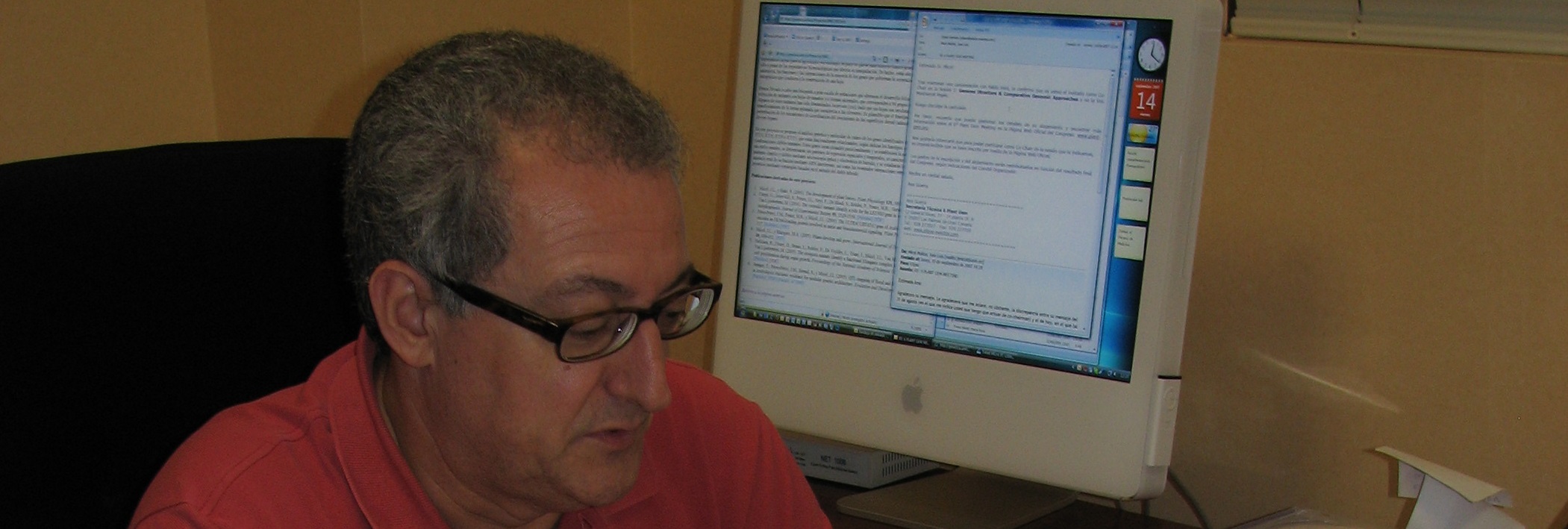Professor in Genetics. Universidad Miguel Hernández (UMH), Elche, Spain (2000-...).
Previous positions held at Caltech (Pasadena, California, USA), CBMSO (Madrid), Universidad de Murcia, Universidad de Alicante and UMH.
PhD in Biology. Universidad de Murcia, Spain (1985).
Research interests
Plant leaves are the best solar panels ever built, and they also perform well as air purifiers and food factories. Leaves efficiently trap sunlight, remove carbon dioxide from the air, and are the ultimate source of most of the oxygen that we breathe and of the food that we eat. Understanding how a leaf is made is important for several reasons, which include gaining knowledge of the biology and evolution of a multicellular organ with no equivalents in the animal kingdom as well as identifying —and eventually manipulating, to increase crop yield— the genetic, environmental, and hormonal cues that determine its final architecture and function.
To shed light on the making of plant leaves, in 1993 we initiated an attempt to saturate the genome of the model plant Arabidopsis thaliana with viable mutations that cause abnormal leaf morphology. Using a high-throughput gene mapping method that we developed, we cloned more than 50 of the genes identified by mutation. The products of these genes participate in various developmental processes, such as polar cell expansion, transduction of hormonal signals, gene regulation, plastid biogenesis, and chromatin remodeling, among others. The broad spectrum of leaf morphological alterations that we identified is helping to dissect specific leaf developmental processes.
Teaching responsibilities
Taught undergraduate courses in Biology, Environmental Sciences, Medicine, Biochemistry and Biotechnology, including: Genetics, Human Genetics, Population Genetics, Evolution, Molecular Genetics and Genetic Engineering.
Bibliometrics

